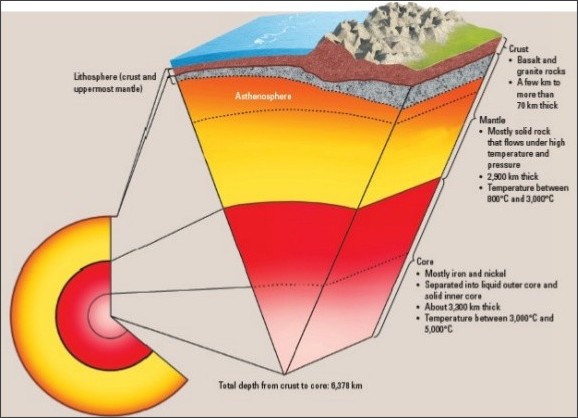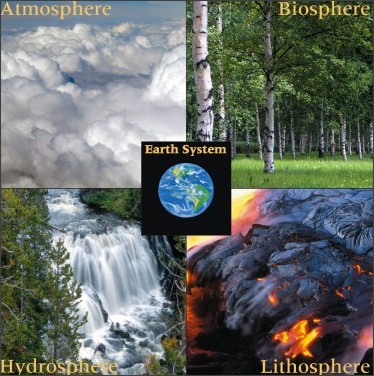The internal structure of the Earth is composed of crust, mantle and core. The external layer is consisted of the Earth's topography, atmosphere including land, water and clouds.
Earth's Crust
There are two different types of crust: thin oceanic crust that underlies the ocean basins and thicker continental crust that underlies the continents.
Earth's Mantle
_Earth's mantle is thought to be composed mainly of olivine-rich rock. It has different temperatures at different depths. The temperature is lowest immediately beneath the crust and increases with depth. _
Earth's Core
The core is divided into two different zones. The outer core is a liquid because the temperatures there are adequate to melt the iron-nickel alloy. However, the inner core is a solid even though its temperature is higher than the outer core.
The area near the surface of the earth can be divided up into four inter-connected "geo-spheres": the lithosphere, hydrosphere, biosphere, and atmosphere.
The lithosphere is the solid, rocky crust covering entire planet. This crust is inorganic and is composed of minerals. It covers the entire surface of the earth from the top of Mount Everest to the bottom of the Mariana Trench.
The hydrosphere is composed of all of the water on or near the earth. This includes the oceans, rivers, lakes, and even the moisture in the atmosphere.
The biosphere is composed of all living organisms. Plants, animals, and one-celled organisms are all part of the biosphere. Most of the planet's life is found from three meters below the ground to thirty meters above it and in the top 200 meters of the oceans and seas.
The atmosphere is the body of air which surrounds our planet. Most of our atmosphere is located close to the earth's surface where it is most dense. The air of our planet is 79% nitrogen and just under 21% oxygen; the small amount remaining is composed of carbon dioxide and other gasses.


